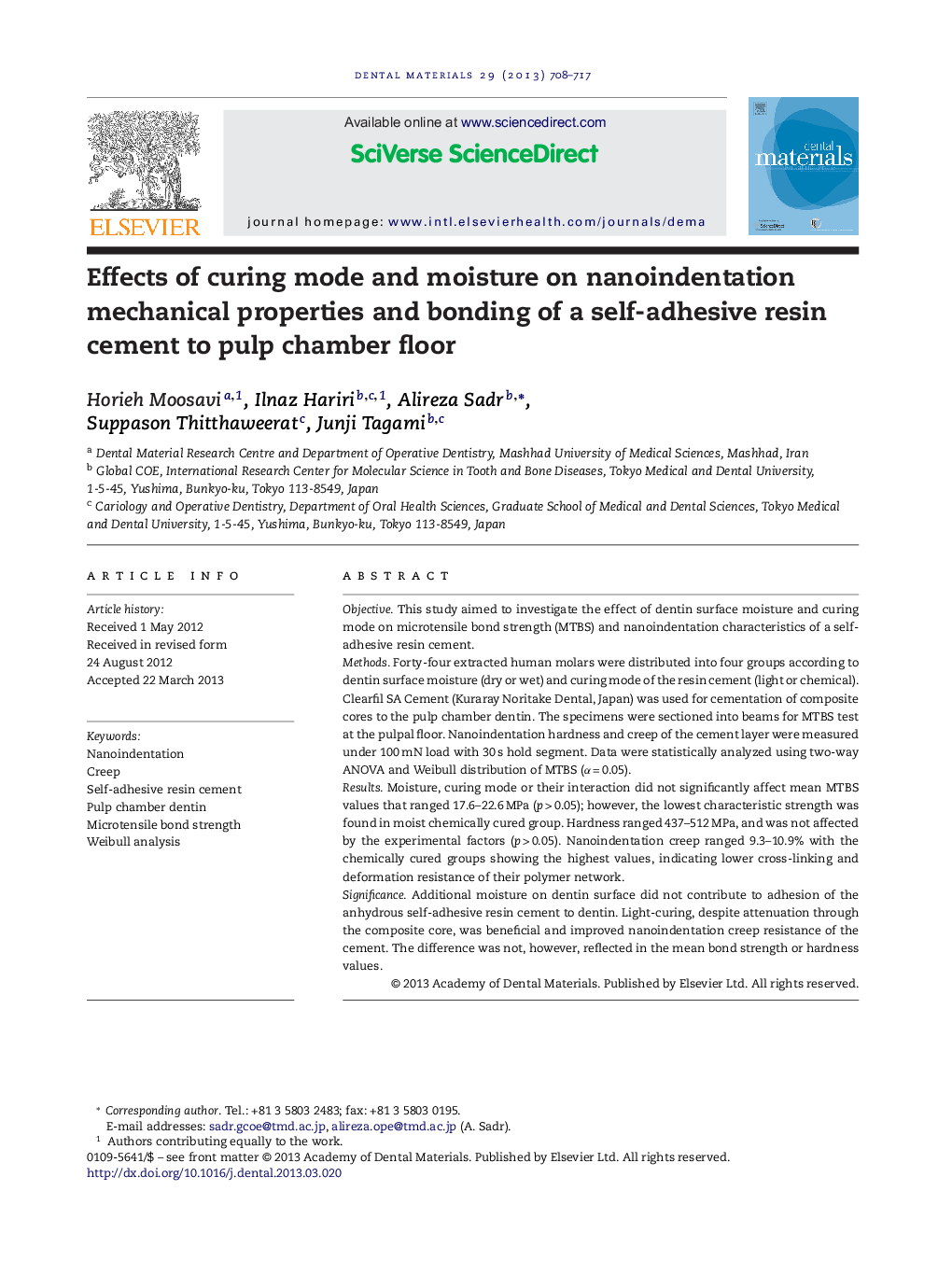| کد مقاله | کد نشریه | سال انتشار | مقاله انگلیسی | نسخه تمام متن |
|---|---|---|---|---|
| 1421449 | 986411 | 2013 | 10 صفحه PDF | دانلود رایگان |

ObjectiveThis study aimed to investigate the effect of dentin surface moisture and curing mode on microtensile bond strength (MTBS) and nanoindentation characteristics of a self-adhesive resin cement.MethodsForty-four extracted human molars were distributed into four groups according to dentin surface moisture (dry or wet) and curing mode of the resin cement (light or chemical). Clearfil SA Cement (Kuraray Noritake Dental, Japan) was used for cementation of composite cores to the pulp chamber dentin. The specimens were sectioned into beams for MTBS test at the pulpal floor. Nanoindentation hardness and creep of the cement layer were measured under 100 mN load with 30 s hold segment. Data were statistically analyzed using two-way ANOVA and Weibull distribution of MTBS (α = 0.05).ResultsMoisture, curing mode or their interaction did not significantly affect mean MTBS values that ranged 17.6–22.6 MPa (p > 0.05); however, the lowest characteristic strength was found in moist chemically cured group. Hardness ranged 437–512 MPa, and was not affected by the experimental factors (p > 0.05). Nanoindentation creep ranged 9.3–10.9% with the chemically cured groups showing the highest values, indicating lower cross-linking and deformation resistance of their polymer network.SignificanceAdditional moisture on dentin surface did not contribute to adhesion of the anhydrous self-adhesive resin cement to dentin. Light-curing, despite attenuation through the composite core, was beneficial and improved nanoindentation creep resistance of the cement. The difference was not, however, reflected in the mean bond strength or hardness values.
Journal: Dental Materials - Volume 29, Issue 6, June 2013, Pages 708–717